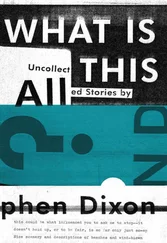The car had its engine in the back, which would be absolutely fine if you couldn’t smell its workings whilst sitting there. The front bonnet was for storage. If you packed to go on holiday, this had the effect of turning any luggage you put there into a sort of early prototype airbag of clothes and knickers, should you have the misfortune to have a head-on collision. Whereas, if you were hit in the rear, a steaming engine would smack you on the back of the head, forcing you through the windscreen because, as it was still the seventies, nobody wore seat belts.
I recall a conversation with my dad about seat belts and the fact that he never wore one. His rationale was that if you ever drove into a river, the seat belt was another thing you had to deal with before climbing out the car, and that delay could be vital. He was also of the firm belief that if you rolled down a hill, there was always a chance that the belt could trap you in the car when the best thing to do would be to open the door and allow yourself to be thrown free. Needless to say, none of these theories has ever been tested and my dad now does wear a seat belt, but amongst the various jobs he has had in his life, safety officer was never one of them.
Our Hillman Imp was grey with an off-white roof – the best way to describe it is as something smaller than a single bed and less attractive than your average washing machine. And the reason that it stands out in my memory amongst all the other cars my dad had was because of one camping holiday we took in the Welsh hills when I was eight. The tent and various pieces of luggage were housed on the roof of the car as the bonnet was filled with clothes and tins of food: my mum was convinced that the camp shops would over-charge, so instead of being ripped off for tins of beans, soup and corned beef, she had stocked up and loaded the car. The fact that all this extra weight probably slowed us down to the point that we were using more petrol never entered the equation. There was no way she was going to allow anyone to rip us off.
My mum and dad sat in the front of the car, of course, while in the rear was me, 8; Carol, 9; Kathy, 12; Eddie, 13; and Lassie, 35 in dog years. Lassie was a white mongrel that I can’t ever remember not having as a child. She was white all over, apart from a black patch on her eye. Every time someone new met her, they would immediately say, ‘That’s a nice dog – is she called Patch?’ to which we would reply, ‘Don’t be stupid. She’s called Lassie,’ as if it wasn’t obvious enough.
She was a brilliant dog who would dance on her hind legs for biscuits, allow you to dress her up in girls’ clothes for a laugh, and was not a bad footballer. I am not joking about the latter point: Lassie could play. She wasn’t one of those dogs that would see a ball and then want to bite it. No, Lassie would join in by using her nose to win the ball, and then, once directed towards the goal, would keep nosing the ball till she had dribbled past everyone and scored. Because she had more legs than anyone else on the field, she was faster than any of the other players, so she was very good at dribbling. The only problem was that she was not really much good at anything else, and if she did score she didn’t have the awareness to stop, and would carry on running all over the estate, still nosing the ball, unless she became distracted by food or a cat. Also, her distribution was rubbish, so we never let her play with us too often. There is nothing worse than a greedy player, even if they are a dog.
So that was four kids and a dog on the back seat; two adults in the front; a six-berth tent along with deck chairs and a table on the roof; and in the bonnet we had clothes, sleeping bags, tins of food and the camping stove with bottled gas. All of this in a car under which my dad had spent hours making sure things like the brakes actually worked when requested to, rather than when they liked.
I cannot possibly imagine embarking on such a trip now. My kids have been brought up with rear-seat TVs and iPads: at the very least, they put in earphones, listen to music and get lost in their own world. They’ve never travelled for hours on holiday in an overcrowded car to one of the wettest countries in the world, where you are camping in a borrowed tent which, when you get there, takes all night to put up as there are no instructions.
We had to cram into the car, with me by the window due to my propensity to throw up every ten miles of any car journey, let alone one where engine fumes were mixing with those of dog farts. I was often given barley-sugar sweets, which were supposed to help car sickness, although how eating something that tasted of sick mixed with sugar was supposed to stop you from being sick I have never understood.
In all the excitement, we never worried about the potential dangers of being in a car that had dodgy brakes and was massively overloaded with tinned food housed under the bonnet next to gas canisters – therefore having all the potential to turn into a dirty bomb at the moment of impact. We were going on holiday and, as my mum and dad played their favourite country and western songs, we prepared to go to the only foreign country I ever visited until I reached adulthood: Wales.
The holiday was great. My memory of it was of sunshine and the beauty of Bala Lake, albeit strangely mixed with the dread of any approaching hill. Early on in the journey it became clear that, despite its name suggesting it was ‘a man of the hill’, the Hillman would not be able to carry us up any slope of substance, while perhaps the ‘Imp’ part of its name was just the start of the word ‘impossible’, because that was what every hill became.
Once we approached the periphery of Snowdonia National Park my dad knew that if we were to stand any chance of ever reaching our destination the weight in the car would have to be reduced. This meant that on the approach to any hill we would all climb out and, along with the dog, begin the long walk up whilst my dad slowly drove the Hillman Imp to the apex. There he would wait for us all to arrive. That said, he didn’t always get there first: on more than one occasion we walked faster than he could make the car go.
There is nothing more humbling than seeing your dad at the front of a procession of cars, willing his own vehicle onwards, while you arrive at the top of the hill faster than him by walking. The frustration of those caught up in the procession was matched only by our collective desire for the Imp to make it to the top. Failure to do so would only result in the embarrassment of being forced to do a three-point turn in an over-laden car in the middle of an ascent, and start again.
When we had all reconvened at a peak, we quickly reassumed our positions in the car and would be rewarded for our efforts by a trip downhill at as much speed as the Hillman Imp could muster. It was like being in a toboggan as we weaved around the bends, until the gradient changed and we all had to get out and start walking again.
One little-known fact about my dad is that he invented the people carrier. Although his version may, by today’s standards, seem rather primitive, he certainly has to be credited with the concept of taking a van and putting people in it.
After the Imp limped to an early grave, it was a red Ford Escort van that my dad brought home next. The fact that it had no seats in the back never struck us as strange; we had owned vans in the past and all we did as kids was climb in the back and sit on a few cushions.
It seems a successful way to travel until you travel with the childhood version of myself, one whose propensity for car sickness was not helped by such a mode of transport. Being in the back of a van with no windows and a vomiting child is not really the place you want to be.
I don’t know if it was the car sickness or just a wave of inspiration, but my dad then decided that he did not want a Ford Escort van. He wanted a family car, and for that to happen he either had to buy a new car or change the one he had, the latter being the most sensible thing due to our lack of money.
Читать дальше











